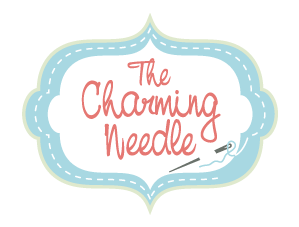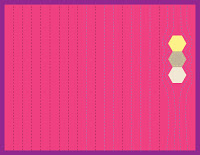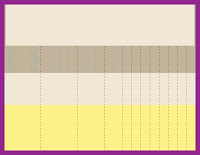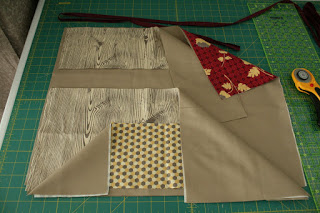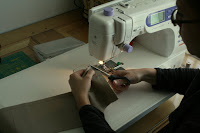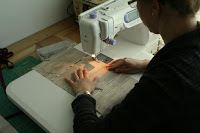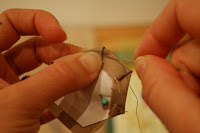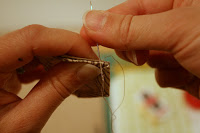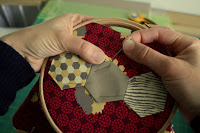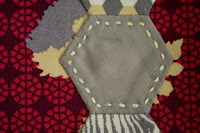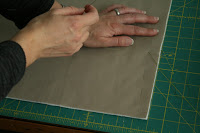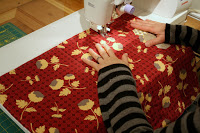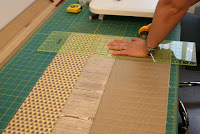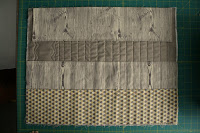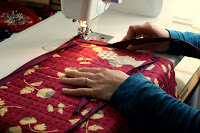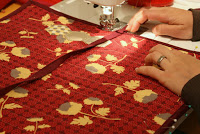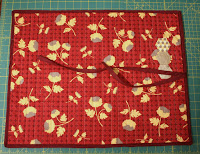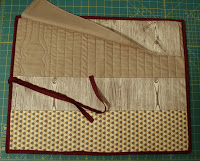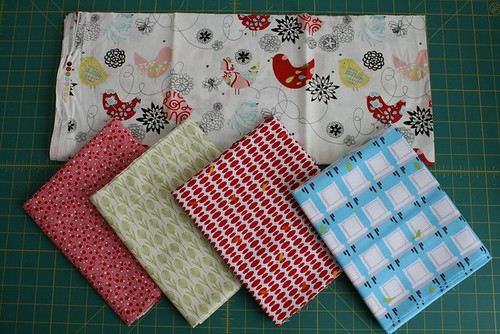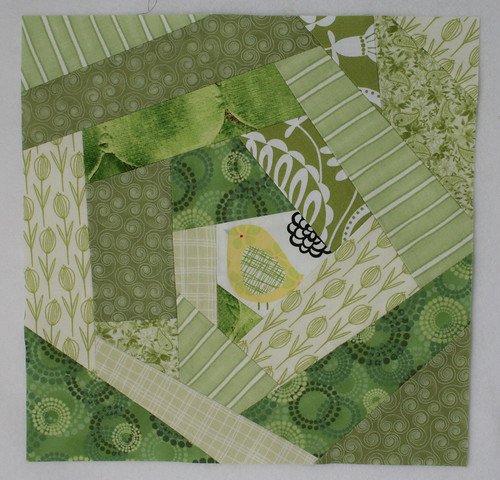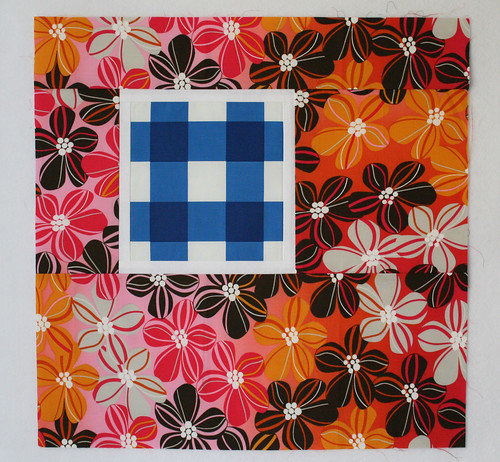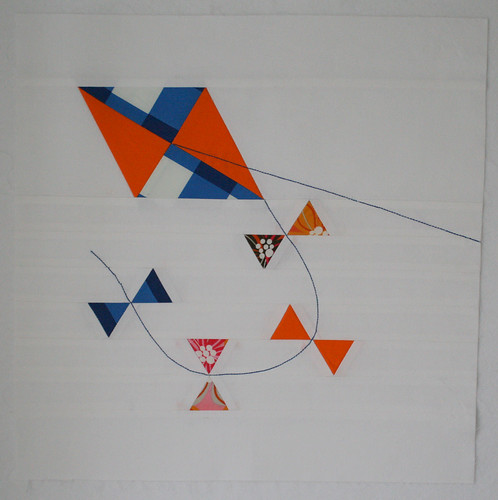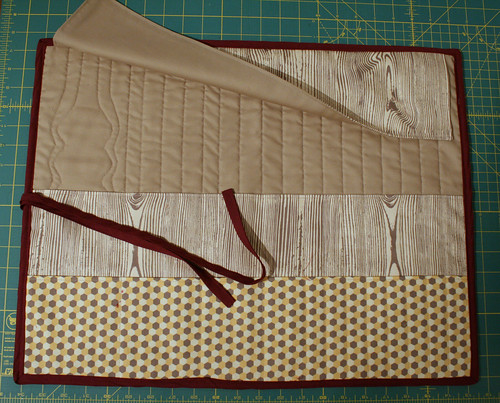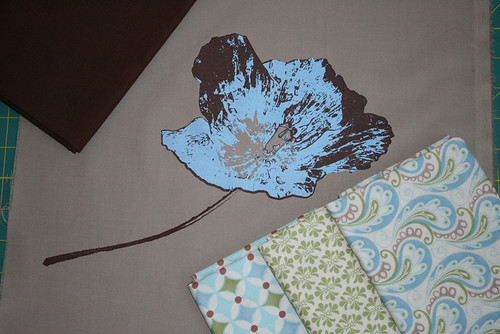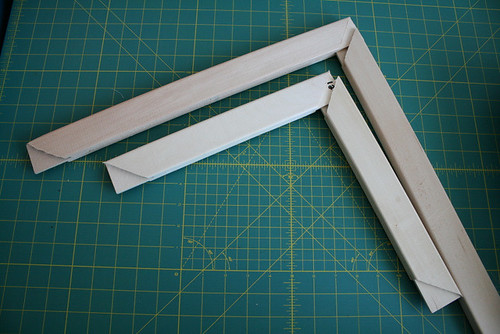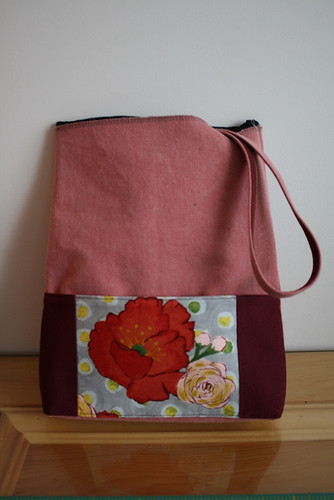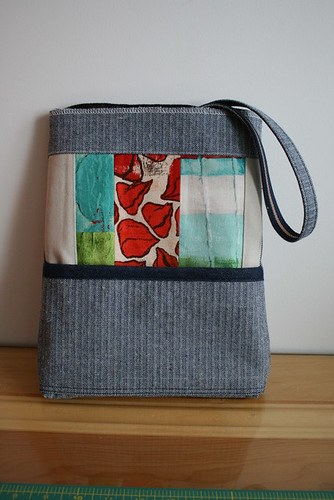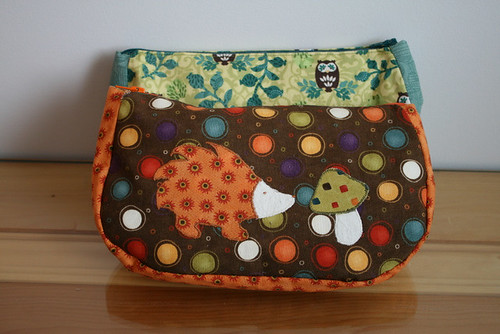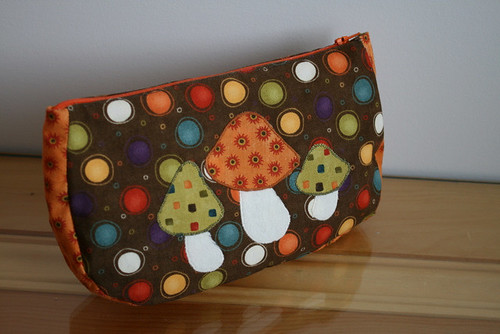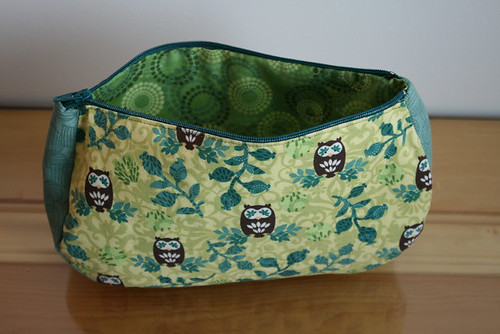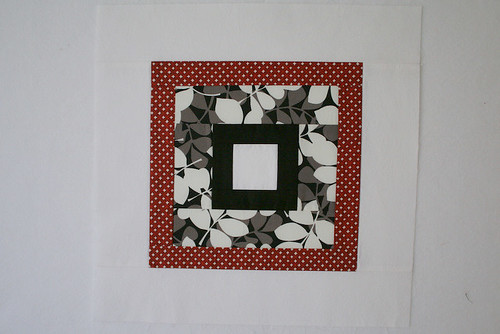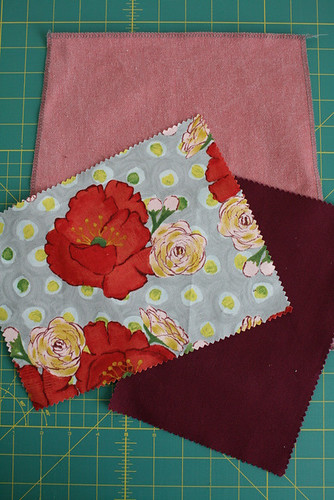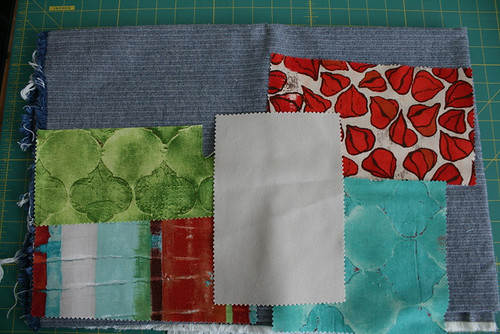Here is a tutorial to make this rolled-up case for knitting needles:

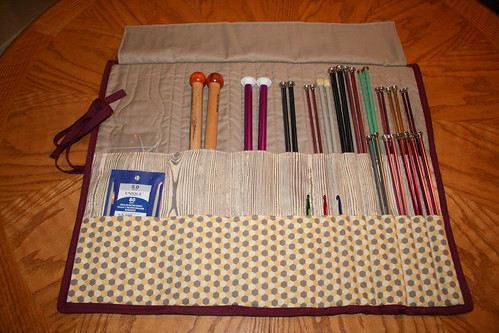
Fabric
(Here: Tossed Flower fabric in Raspberry from Joel Dewberry’s Ginseng collection).
(Here: Pine fabric in Stone from Joel Dewberry’s Ginseng collection).
(Here: Geo fabric in Sand from Joel Dewberry’s Ginseng collection).
Assemble Pockets and Flap
| 5. Put the fabrics for the high pocket right side together. Sew at top edges together (Seam allowance ½”). Do the same for the low pocket. For the flap, also sew both sides and clip corners. | |
| 6. For the 3 pieces, turn right side out, press and top-stitch. |
Make the Appliqués
| 7. Using the hexagon template and the English Paper Piecing technique, prepare 3 hexagons. | |
| 8. Hand-stitch the hexagon together using a whipstitch along the adjacent edges to form a column of 3 hexagons. Put the hexagon in solid color in the middle. | |
| 9. Position the appliqué on the right side of the outer panel (refer to the case template to position the appliqués). Baste in place. 10. Hand-stitch the appliqués using a tack stitch (Tip: use an embroidery hoop to facilitate this task). |
|
| 11. Hand-stitch with embroidery floss around the edge of the middle hexagon using a running stitch. |
Assemble the Needle Case
| 12. Put the exterior panel face down on a flat surface, position the batting on it and then the interior panel face up. Baste or pin all layers together. | |
| 13. Download and print the quilting template. Start quilting the case using your sewing machine. For now, only sew the lines in blue on the template. The lines are 1” apart and they start at 1½” from the left edge with the exterior panel facing up. For the lines around the appliqués, you can transfer them using the template with the help of tracing paper, or freehand. | |
| 14. Position the high and low pockets on top of each other and position on the interior panel with bottom edges aligned. Baste in place. | |
| 15. Complete the quilting. Do the remaining lines (black dotted line on the quilting template). Those seams will also act as dividers for the pockets. |
Finish the Needle Case
And here is the final result:
